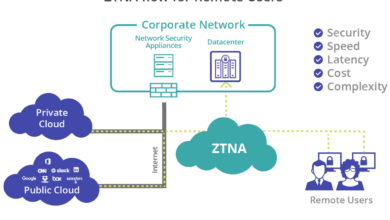11 Top TikTok Trends in 2023

TikTok is still a massive hit in 2023! People love this short video app because it’s all about being creative, having fun, and connecting with others. You can watch cool videos that last only a minute. It’s super addictive! Millions of TikTokers discover, adopt, and share new trends daily to get more likes on TikTok videos. This article explores the 11 top TikTok trends of 2023.
Top 11 Top TikTok Trends to Follow in 2023
1. Sustainable DIY Projects
More and more people are now trying out sustainable DIY projects, where they show how they recycle, reuse, and reduce waste. They make videos demonstrating how they turn old things into beautiful and valuable items. This trend is helping others learn to live more eco-friendly and inspiring them to be creative.
2. Home Cooking and Baking
The popularity of cooking and baking at home is still growing. TikTok people share their cooking and baking abilities by making bread from scratch or using their family recipes. This trend helps more people learn about food and cooking techniques.
3. Wellness and Self-Care
In 2023, TikTok is all about wellness and self-care! People are sharing helpful videos on yoga, meditation, and skincare routines to help us take better care of ourselves. The trend is about making time for personal well-being, inspiring everyone to lead happier and healthier lives. Let’s join in and invest some time in ourselves for a brighter future!
4. Dance Challenges
Dance challenges remain a staple of TikTok. Each new catchy song brings a wave of choreographed dances, sparking friendly competition. This trend fosters a sense of community, connecting people globally through the joy of dance.
5. Virtual Learning
Educational content thrives on TikTok in 2023. Tutors and experts use this platform to teach subjects like math, science, and languages, making learning accessible and enjoyable. This trend democratizes education, breaking down barriers to knowledge.
6. Shopping Hauls
Shopping hauls are the rage on TikTok, with users showcasing their latest fashion and technology purchases. This trend creates a platform for product reviews and recommendations, influencing consumer behaviour and shopping trends.
7. Pet-Centric Content
Pets are becoming more popular on the internet. People love sharing cute and funny things their pets do and helpful tips for caring for them. It brings pet owners from all over the world closer together and helps them connect.
8. Social Activism
TikTok has become a stage for social activism, with users rallying support for causes they care about. This trend encourages civic participation and awareness, empowering a new generation of activists.
9. Virtual Tours
In 2023, TikTokers are bringing the world to your fingertips with virtual tours. From city explorations to nature hikes, these videos offer viewers a chance to experience the world from their screens. This trend fuels wanderlust and appreciation for diverse cultures and landscapes.
10. Comedy Skits
TikTokers enjoy showing off their funny talents by making hilarious short videos. These videos bring smiles to people and help them feel better. It shows that anyone can be funny and make others laugh too!
11. Celebrity Lookalikes
TikTok users are finding their celebrity doppelgangers and showcasing side-by-side comparisons. This trend cultivates fun, excitement, and occasional disbelief at the uncanny resemblances.
The Role of Paid Likes in TikTok Trends
TikTok is a social media app where people share short videos. When you like a video, it shows that you enjoy it. Some users use paid likes to make their videos seem more popular.
On TikTok, when you like a video, it shows that you find it enjoyable, interesting, or relatable. It helps make the content more popular. Some people use paid likes to make their videos look more popular than they are.
TikTok has trends, popular themes or ideas that many people have. These trends include dancing, cooking, crafts, or funny sketches. When many people do the same trend, their videos get lots of likes, comments, and shares.
Paid likes help a video get noticed by TikTok’s algorithm. The algorithm examines how many people like, comment, and share a video. If a video gets many interactions, the algorithm suggests it to more users on their “For You” page.
When someone buys likes, their video looks like it’s super popular. It tricks the algorithm, so it promotes the video even more. It can be helpful when starting a new trend or joining a popular one.
When a TikToker buys likes for their video, it tricks the app’s system into believing it is viral. It increases the chances of the video being promoted and becoming viral. It is a valuable strategy, particularly when starting a new trend or joining a popular one.
Frequently Asked Questions
What are the most popular trends on TikTok in 2023?
Top trends include bearable DIY projects, home cooking and baking, wellness and self-care, dance challenges, virtual learning, shopping hauls, pet-centric content, social activism, virtual tours, comedy skits, and celebrity lookalikes.
How do TikTok trends impact society and culture?
TikTok trends have a significant impact on society and culture. They promote caring for the environment, staying healthy, learning new things, and supporting important causes. TikTok also helps people connect and share their unique experiences, thoughts, and skills with the whole world.
How does the TikTok algorithm work?
The TikTok algorithm favours engagement. Content with more TikTok likes, shares, comments, and views will be promoted to a broader audience. In turn, this increases the chances of a post going viral.
How can buying paid likes on TikTok boost my content’s visibility?
Getting more likes can boost your content’s popularity on TikTok. It might help it get noticed by more people through TikTok’s system. But remember, it’s vital to create authentic and original content that connects with your audience.
Is it ethical to buy likes on TikTok?
Buying likes on TikTok is okay, but it’s essential to use it wisely. Please don’t rely solely on purchased likes; let them support your natural growth. Being genuine and having fundamental interactions are the secrets to doing well on TikTok over the long run.
Conclusion
TikTok is still making a significant impact in 2023, influencing our online and offline lives. It’s a place where people showcase their creativity, learn new things, and connect with others worldwide. To stand out on TikTok, you can learn from the latest trends and even use paid likes to boost your content. Just remember, TikTok is all about being genuine and building connections, so always stay true to yourself as you navigate your TikTok journey.



